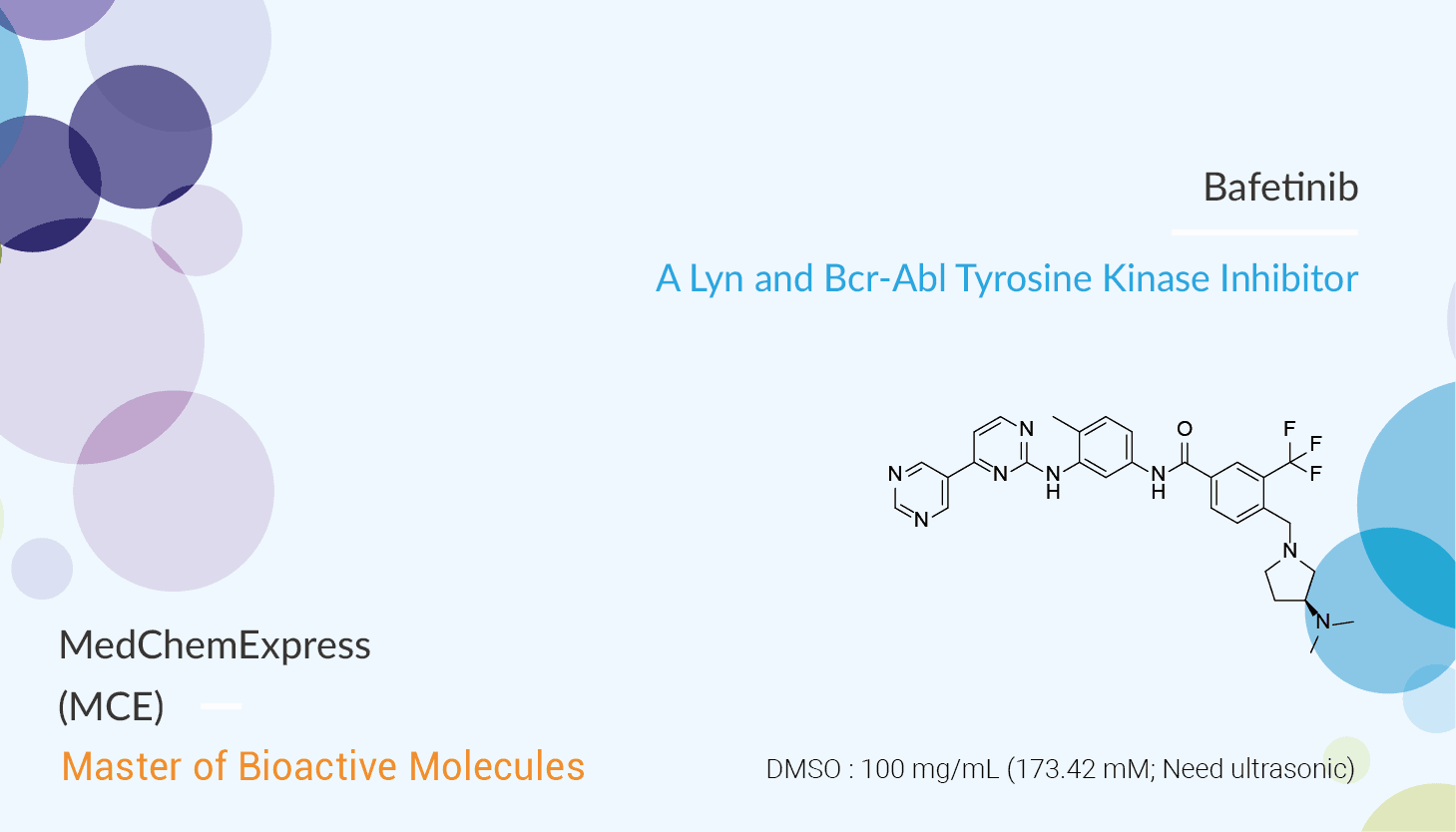The treatment of Philadelphia chromosome-positive (Ph+) leukemias has improved markedly. There are some inhibitors of Bcr-Abl tyrosine kinase (TK) that are effective for Ph<sup>+</sup> leukemias. However, resistance to imatinib can develop by various molecular mechanisms. They include Bcr-Abl overexpression, mutations within the imatinib-binding site of Bcr-Abl, expression of a drug efflux pump, or compensatory overexpression of related Src family kinases. In particular, point mutations in bcr-abl constitute the most commonly occurring and intractable. However, it appears that a few leukemic cells often survive exposure to imatinib or second-generation Bcr-Abl inhibitors. In this study, Bafetinib blocks Bcr-Abl autophosphorylation in vitro 25- to 55-fold more efficiently than imatinib and is at least 10 times more effective than imatinib in suppressing the growth of Bcr-Abl-positive (Bcr-Abl<sup>+</sup>) leukemic tumors in vivo. Moreover, Bafetinib inhibits the TK activities of most of the imatinib-resistant-mutated Bcr-Abl proteins except T315I mutant.

Bafetinib inhibits the tyrosine kinase activities of most of the imatinib-resistant-mutated Bcr-Abl proteins except T315I mutant. INNO-406 induces apoptosis of Bcr-Abl<sup>+</sup> cells via the Bcl-2 family-regulated intrinsic apoptotic pathway. Bafetinib upregulates the transcription of <i>bim</i>, <i>bmf</i> and <i>bik</i>, but not <i>bad</i>, <i>hrk</i>, <i>noxa</i> or <i>puma</i>. It induces <i>Bmf</i> and <i>Bik</i> approximately 30-fold more potently than Imatinib. In addition, ABT-737, an inhibitor of antiapoptotic Bcl-2 and Bcl-X<sub>L</sub>, greatly enhanced the apoptosis by Bafetinib, even in Bafetinib-less sensitive cells with Bcr-Abl point mutations except for T315I mutation.
In summary, Bafetinib is an orally active dual Abl/Lyn tyrosine kinase inhibitor. Bafetinib is a much more active Bcr-Abl tyrosine kinase inhibitor than imatinib. It augments the activities of several proapoptotic Bcl-2 homology (BH)3-only proteins and induces apoptosis in Ph<sup>+</sup> leukemia cells via Bcl-2 family-regulated intrinsic apoptosis pathway.
Reference:
Kuroda J, et al. Cell Death Differ. 2007;14(9):1667-1677.